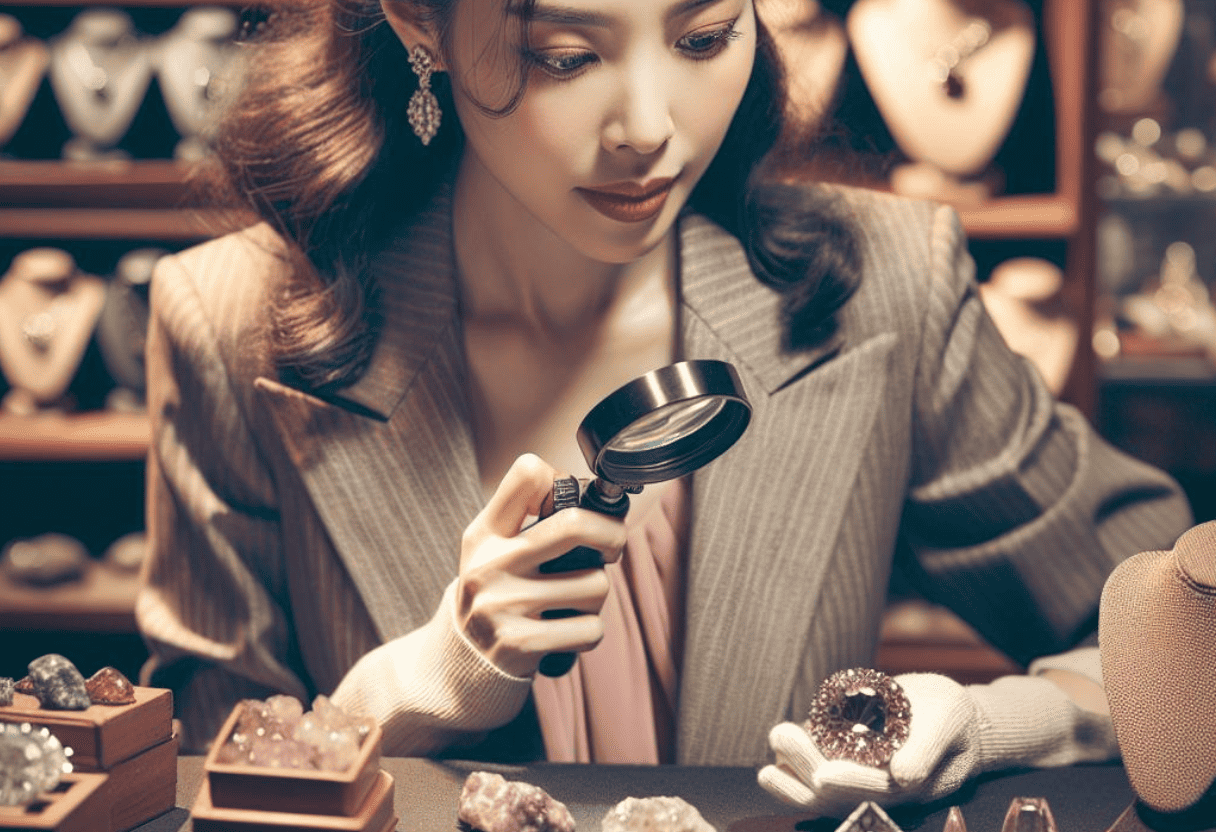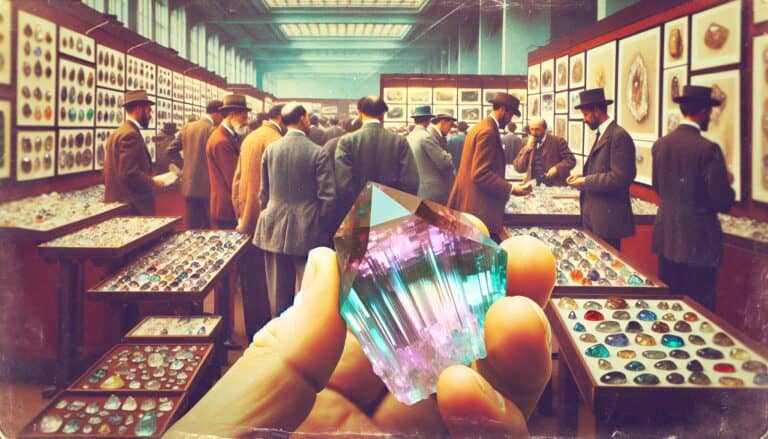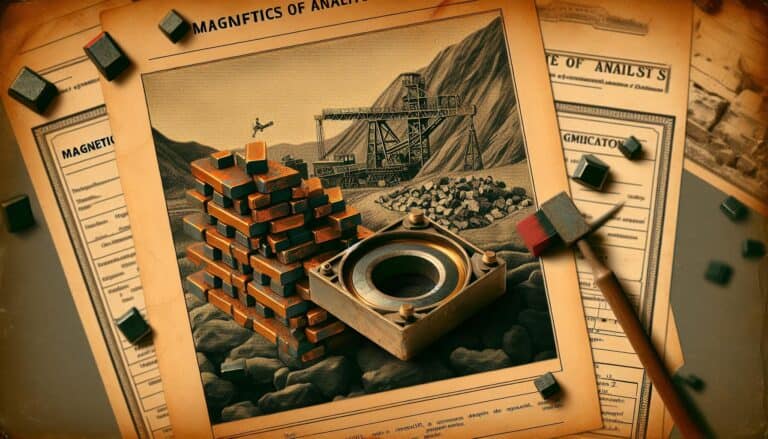You’re probably wondering how much kunzite is worth, especially if you’ve recently stumbled upon this alluring gemstone.
With its delicate pink to violet hues, kunzite is not just a visual treat but also a gem with an intriguing value proposition.
Understanding kunzite’s worth isn’t just about the price per carat. It’s about the interplay of factors like color intensity, clarity, cut, and carat weight that collectively determine its market value. Let’s delve into what makes kunzite a gem worth considering for your collection or as an investment.
Whether you’re a collector or simply curious, getting to grips with kunzite’s value can be as fascinating as the stone itself.
Stay tuned as we uncover the nuances that influence kunzite’s worth in the vibrant world of gemstones.
Kunzite’s value is influenced by color intensity, clarity, cut, and rarity. Vivid pink to violet hues and high clarity increase its worth. Kunzite is admired for pleochroism, showing different colors at various angles. Although relatively abundant, high-quality kunzite is rare, enhancing its desirability and price.
What Is Kunzite?
You’ve likely heard of diamonds, rubies, and emeralds, but kunzite is a gemstone that might be less familiar. Kunzite is a relatively recent discovery in the world of gemstones, first unearthed in California at the dawn of the 20th century. Named after the noted gemologist George Frederick Kunz, this stone has garnered admiration for its appealing color spectrum—ranging from soft pink to striking violet.
This gemstone is a variety of the mineral spodumene, which also occurs as colorless, yellow, green, and blue specimens, but it’s the lilac shades of kunzite that stand out in the gem market. What sets kunzite apart is its pleochroism—the ability to show different colors when viewed at different angles. This quality often enhances the visual appeal of the stone, making it a fascinating subject for jewelry designers and gem enthusiasts alike.
Kunzite’s allure isn’t just skin deep; it’s also prized for its metaphysical properties. Many believe kunzite to be a stone of emotion, offering benefits like stress relief and the promotion of inner peace. Whether you’re drawn to its aesthetic charm or its potential emotional benefits, there’s no denying that kunzite holds a unique place in the pantheon of precious gemstones.
Maintaining the pristine condition of your kunzite is crucial, so it’s important to note that, despite its beauty, kunzite can be quite sensitive to light and heat. Prolonged exposure can lead to fading of its vibrant hues, which underscores the importance of proper care and handling—especially if you’re considering kunzite for an engagement ring or another piece of jewelry that you’ll wear daily.
As you delve deeper into the specifics of kunzite’s worth, the interplay of its physical characteristics and its market appeal becomes evident. Recognizing kunzite’s distinctiveness and how factors such as origin and treatment affect its value can help you make informed decisions, whether you’re a collector or simply searching for that perfect piece of kunzite jewelry to add to your collection.
Kunzite Prices: Factors That Affect Value
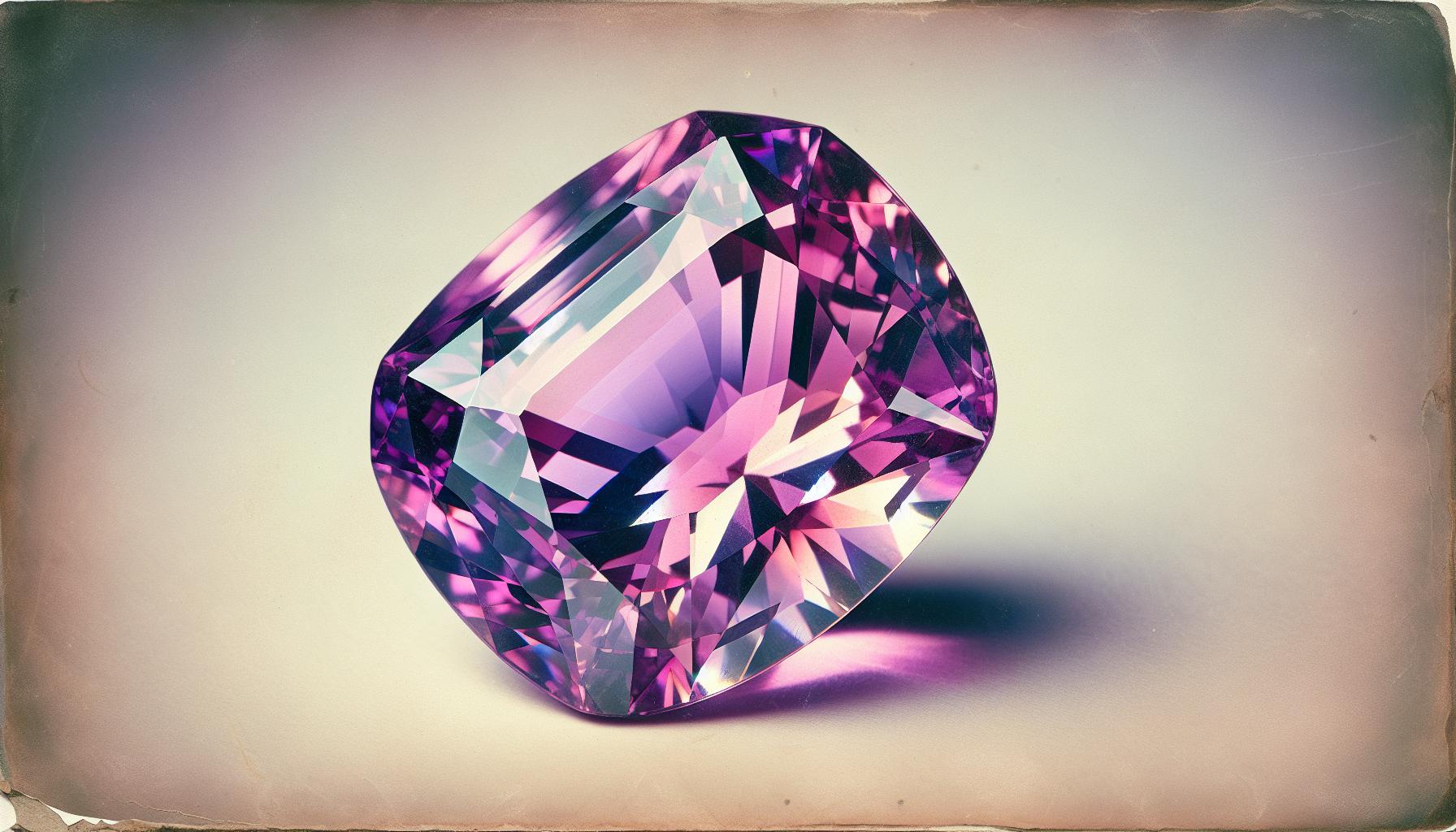
When you’re on the hunt for kunzite, you’ll find that prices can vary greatly. Several factors play into how each stone is valued, and understanding these can help you make an informed purchase.
Color, Clarity, and Cut Quality
The most visually striking aspect of kunzite is its color. The more intense and vibrant the pink to lilac hues, the more the stone is considered desirable, commanding a higher price. Pastel colors are typical, but deep saturated colors are particularly sought after, increasing the gemstone’s value significantly.
But it’s not just about the color. Clarity is equally as important. Kunzite is expected to have few inclusions, and as such, stones that boast exceptional clarity will be valued more highly than those with visible flaws or inclusions. The clearer the stone, the more it’ll catch the light and shine, a feature that’s highly prized in the world of gemstone collectors and jewelry enthusiasts.
The cut of the kunzite also influences its worth. A well-cut kunzite will exhibit a fascinating display of its pleochroism, revealing different colors from different angles. Expertly cut gems that maximize the stone’s brilliance and minimize color zoning often fetch a higher price. It’s all about the skill of the cutter – a well-proportioned, symmetrical cut can increase the gemstone’s value exponentially.
Market Demand and Availability
Kunzite’s worth is also influenced by its market demand and availability. Since it’s quite a recent addition to the gem market, its demand fluctuates. Trending colors or celebrity endorsements can spike interest and drive up prices. Additionally, some colors of kunzite may be more fashionable at a given time, thereby inflating their value.
On the matter of availability, while kunzite is not considered extremely rare, high-quality specimens are not always easy to find. Stones sourced from renowned mining locations, like Pakistan or Brazil, are sometimes valued more for their pedigree. The balance between demand and the availability of quality stones dictates the market price to a large extent. Quality stones with notable color, clarity, and expert cut will always be in demand, and thus more valuable.
Keep an eye out for not just the beauty of the gem but also its origin, size, and treatment. These factors interplay with color, clarity, and cut to settle on the final price tag for each kunzite piece you’re considering.
Understanding Kunzite: A Rare Gem
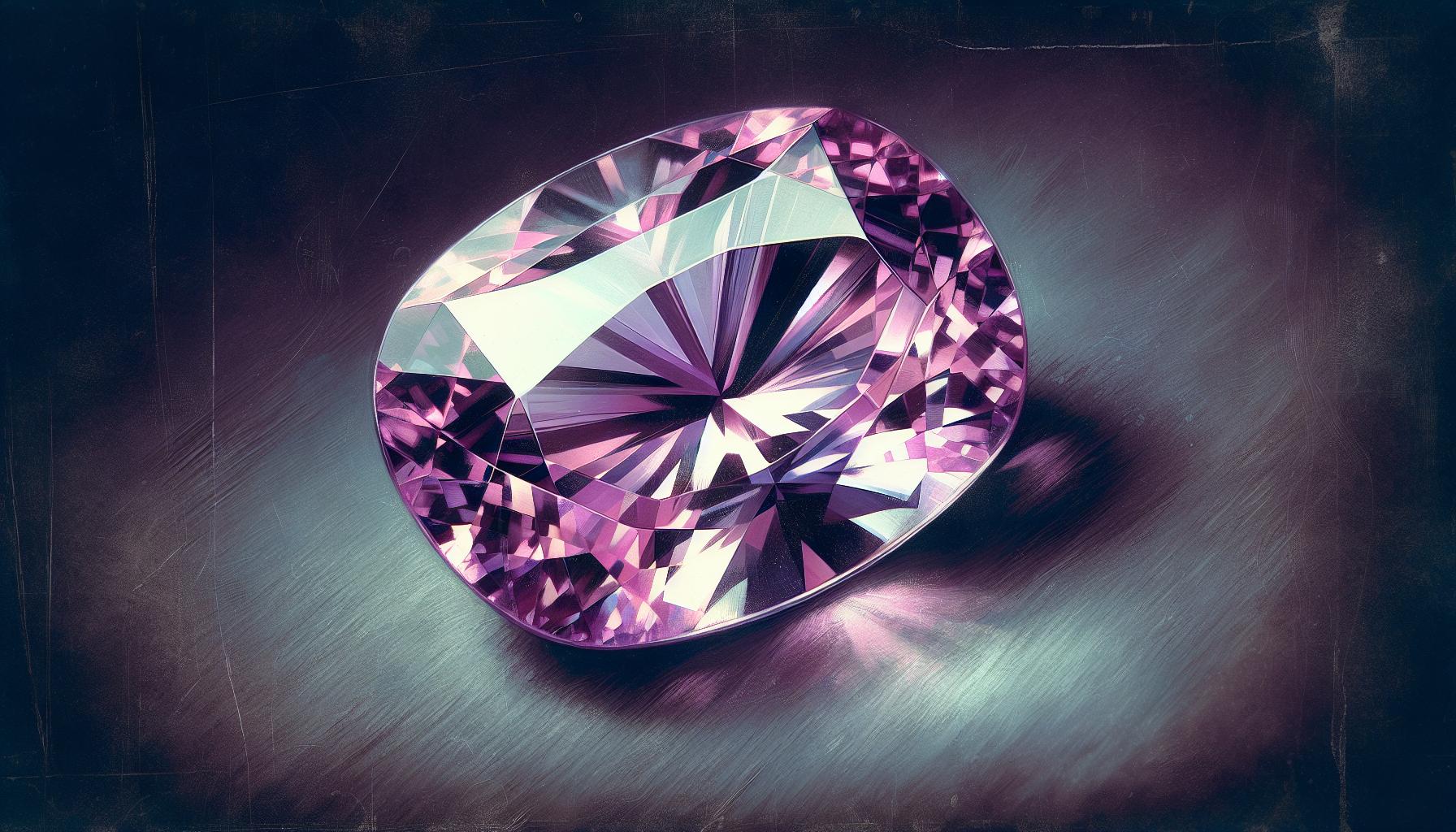
The Rarity of Kunzite
Kunzite stands among the elite group of gemstones where rarity elevates its worth. Limited availability is due to its geological scarcity; kunzite isn’t found as abundantly as other stones. When you seek out kunzite, you’re tapping into an exclusive market. Rarity also implies that high-quality pieces are even more scarce uplifting their value dramatically.
Discovering a superb example of kunzite becomes a thrilling hunt for gem enthusiasts and collectors alike. With its distinct pleochroism – showing different colors when viewed at different angles – kunzite offers a unique visual experience. This pleochroism further defines its rarity as obtaining a stone with strong and clear color shifts is less common and consequently more prized.
Origins and Characteristics
Diving deeper into kunzite’s appeal, you’ll find that its origins play a critical role. Kunzite is mostly mined in Brazil, Afghanistan, and Madagascar, but quality specimens can also emerge from other parts of the world. Each location imparts kunzite with unique features:
- Brazilian kunzite is renowned for its brilliance and often found in larger sizes.
- Kunzite from Afghanistan is prized for its deeper hues.
- Madagascan kunzite, while varying in color, can display an exceptional clarity.
The characteristics of kunzite stem from its formation process and elemental makeup. This stone’s signature lilac to pink color is usually due to traces of manganese. However, its color can fade under prolonged exposure to sunlight, making care and storage critical.
In terms of physical properties, kunzite is relatively hard, rating between 6.5 and 7 on the Mohs scale. However, this doesn’t make it immune to wear and tear; kunzite’s cleavage planes – where the crystal structure splits most easily – require attention during cutting, setting, and daily wear to avoid damage.
Its allure isn’t only skin deep; each kunzite has its own distinct fingerprint of inclusions. These inclusions, often hair-like threads or liquid pockets, can detract or contribute to the gem’s value depending on their severity and visibility. Thus, the intrinsic characteristics of every kunzite piece influence not only its aesthetics but also its market value.
Kunzite Grading and Valuation
The Grading System for Kunzite
When you’re considering purchasing kunzite, understanding the grading system is paramount. Unlike diamonds, which have a universally accepted grading system (the 4Cs), colored gemstones like kunzite are evaluated based on a more subjective set of criteria that still include color, clarity, cut, and carat weight—but with different emphasis on each factor.
Color reigns supreme in kunzite’s valuation. Look for stones that exhibit vibrant pink to violet hues, as they typically appraise higher. The grading system pays special attention to the stone’s saturation and tone, with preference given towards intense, vivid colors that retain their richness across different lighting conditions.
Clarity follows, with the prices scaling up for pieces that lack visible inclusions. While some inclusions are acceptable, those that are eye-clean—that is, no inclusions visible to the naked eye—score higher on the grading scale.
As for the cut, it’s not just about the shape but how the cut contributes to the stone’s overall allure. A high-quality cut can enhance kunzite’s pleochroism—its ability to display different colors when viewed from various angles—and increase its desirability. Well-proportioned and symmetrical cuts are prized, as they reflect light impressively, maximizing brilliance and fire.
Finally, the carat weight has a direct impact, but unlike other precious stones, larger kunzite specimens can be more readily available. Despite this, bigger stones with exceptional color and clarity still command a significant premium.
Certification and Appraisal
Seeking kunzite certification and appraisal from reputable sources is a wise move. Third-party certifications can provide peace of mind by confirming the authenticity and quality of your kunzite. These documents should detail the gem’s dimensions, color, clarity, cut, and carat weight, aligning with the grading system criteria.
In your search for a certified piece, consider institutions like the Gemological Institute of America (GIA) or the American Gem Society (AGS). These organizations offer comprehensive reports attesting to the gem’s natural origin and absence of certain treatments that could artificially enhance its appearance.
An appraisal differs from certification, focusing more on your kunzite’s market value. Professional appraisers take into account the grading factors as well as the current market trends, the gemstone’s rarity, and its provenance. They might also evaluate the quality of the jewelry setting (for kunzite in jewelry), considering the materials and craftsmanship to determine the overall value.
Current Market Trends in Kunzite Pricing
When delving into the nuances of kunzite’s value, you’ll discover that market trends significantly influence its price. Currently, the marketplace exhibits a noticeable preference for deeply saturated pink and purplish stones, with these hues commanding higher prices. This surge aligns with a broader trend of consumers gravitating towards vibrant and unique colored gemstones, elevating kunzite’s status among enthusiasts and collectors alike.
Specifically, stones that show a strong pleochroic effect—with colors shifting beautifully in different lighting conditions—are highly sought after. This demand is reflected in their pricing, both at retail and auction levels. As such, stones possessing this characteristic can see their value climb substantially.
With increased public interest, there’s been a rise in kunzite appearing in high-end jewelry collections and custom pieces. Renowned designers often incorporate these gems into their lines, further driving their desirability and cost. It’s worth noting that prices fluctuate based on market availability and the gem’s origin; stones from famed mining locations, for instance, might yield a premium due to their pedigree.
Here’s a snapshot of kunzite’s price per carat based on recent market data:
| Carat Weight | Price Range (USD) |
|---|---|
| Under 5 ct | $20 – $60 |
| 5 – 10 ct | $75 – $150 |
| 10 – 20 ct | $200 – $350 |
| Over 20 ct | $400+ |
Remember that these values are approximate and can vary greatly depending on the specific qualities of the gem in question. Similarly, while larger kunzite specimens are available, they often carry a per-carat price that is relative to their rarity and the market’s capacity to absorb such pieces.
As with all gemstones, the ebb and flow of fashion trends can sway kunzite prices. Keeping your finger on the pulse of the jewelry industry and monitoring auction results will give you insights into how these trends might impact your investment or purchase. Whether you’re looking to add to your collection or contemplating selling, understanding these market dynamics is key to making an informed decision.
The Most Expensive Kunzite
When you’re delving into the realm of gemstones, the crème de la crème inevitably catches your eye. In the kunzite market, certain factors drive a price to the upper echelon. Exceptional specimens of kunzite can fetch breathtaking prices, especially when they showcase an extraordinary combination of size, color intensity, and clarity.
Discovering the most expensive kunzite ever sold isn’t as straightforward as with diamonds, mainly because kunzite is still relatively undervalued. However, large kunzite stones with a vibrant, intense pink hue can command prices of several thousand dollars per carat.
Some historical pieces have set records at prestigious auctions. For instance:
- In 1996, a 396 carat kunzite reportedly sold for over $10,000.
- The “Big Kahuna” kunzite gem weighing 880 carats stands out as one of the largest and most valuable kunzites, exhibiting flawless structure and exceptional color.
These sales not only reflect the gem’s worth but also signify its increasing prominence in the eyes of collectors and connoisseurs.
Market Rarity and Demand
In your quest for the finest kunzite, you’ll find that rarity significantly impacts price. Larger stones over 10 carats, which retain deep pinkish hues and exhibit exquisite clarity, rise to the top of the market. Adding to the high-valued mix are kunzites free of visible inclusions, with cuts that enhance their pleochroic display without compromising beauty.
As demand grows for these limited pieces, the trend towards appreciation in value is clear. Celebrities and luxury brand endorsements often influence the desirability of such gemstones, potentially increasing their market value exponentially.
Investment Considerations
When considering kunzite as an investment, keep an eye on the gemstone’s provenance. Stones with a notable history or those that have belonged to personalities may carry a premium. Also, consider market predictions and how current trends might shape the future value of kunzites. Auction results can be a gold mine of information, providing insight into what qualities are most sought after by serious collectors and investors.
Buying Kunzite: Tips and Recommendations
When you’re in the market for kunzite, there are several strategies you can use to ensure you’re getting the best value for your money.
Where to Purchase High-Quality Kunzite
To find high-quality kunzite, start by looking for reputable jewelers or specialized gemstone stores. Attending gem and mineral shows can also offer an opportunity to see a variety of kunzite firsthand. Here’s where you should consider looking:
- Authorized Dealers: Seek out dealers who specialize in colored gemstones; they’ll often have a range of kunzite stones with different grades and prices.
- Online Marketplaces: Websites like Etsy or eBay can be great places to find kunzite, but ensure sellers have high ratings and read the customer feedback.
- Estate Sales: Sometimes you can find exceptional pieces of kunzite jewelry at estate sales, but it’s crucial to have an understanding of their worth.
Remember to ask about the return policy, warranties, and any certificates that authenticate the gemstone’s grading.
Ensuring Authenticity and Value
Checking a kunzite’s authenticity ensures you’re not overpaying for a synthetic or low-quality stone. Here’s how you can safeguard your investment:
- Certification: Always ask for a gemological certificate from a recognized laboratory like GIA or AGS to verify the stone’s characteristics.
- Expert Appraisal: Before making a significant investment, you might consider having the kunzite appraised by an independent gemologist.
- Comparative Shopping: Don’t purchase the first kunzite you see. Compare pieces across different sellers to understand the price range for the stone’s quality.
- Informed Decisions: Stay updated with market trends in gemstones and seek professional guidance when in doubt.
By following these tips and recommendations, you can make a confident choice as you add kunzite to your collection of precious stones.
Conclusion: The True Worth of Kunzite
You now have the insights to navigate the kunzite market with confidence.
Remember that securing the best value for your money hinges on due diligence and an understanding of the gem’s nuances. Whether you’re at a bustling gem show or browsing online listings, your newfound knowledge empowers you to make savvy choices. Don’t hesitate to leverage professional appraisals and certifications to affirm your investment.
Armed with these strategies, you’re well-equipped to appreciate the true worth of kunzite and add a stunning piece to your collection.

